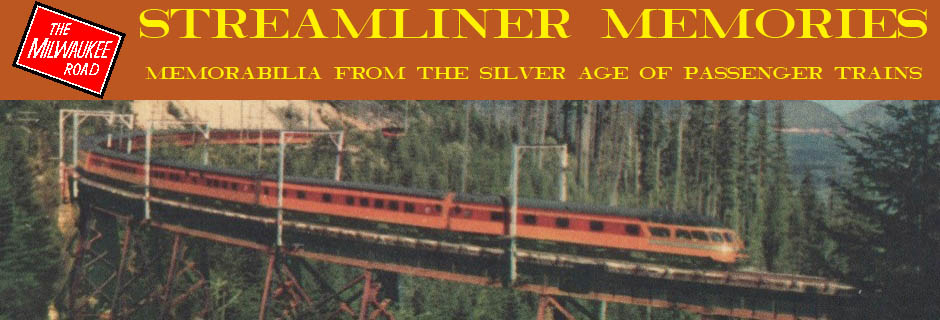Sometime in the late 1940s, SP&S adopted this timetable cover–green with its large red oval logo on top and two smaller logos of parent GN and NP railways below–and used it for about two decades. This one, dated October 1958, advertises Oregon’s 1959 centennial exposition on the back cover.
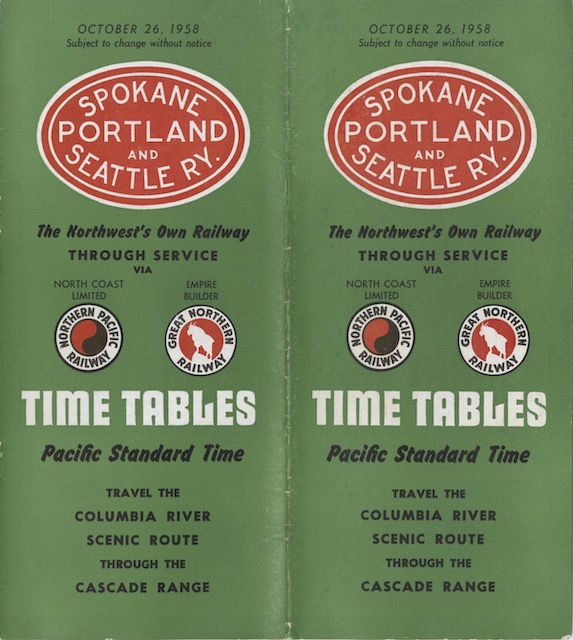 Click image to download a 5.7-MB PDF of this 12-page timetable.
Click image to download a 5.7-MB PDF of this 12-page timetable.
I recently acquired this timetable because I realized I only had one SP&S timetable, from 1950, in my collection. But the back cover ad also gives me an excuse to present some memorabilia from the centennial fair, which was partly sponsored by the SP&S and other Northwest railroads. I attended that fair, though–being 6 years old at the time–I barely remember it.
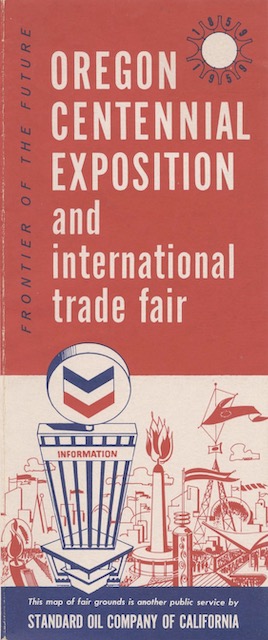 Click image to download a 3.0-MB PDF of this brochure.
Click image to download a 3.0-MB PDF of this brochure.
This map of the fair was distributed by Standard Oil of California, which had an information booth at the center of the fair topped by the company’s chevron logo, which ended up being in many photos of the fair. Next to the information booth was a large sculpture with a lit gas flame, representing Northwest Natural Gas. Since this sculpture was seen by people entering the fairgrounds, I always thought of it as the chief symbol of the fair the way the space needle was the chief symbol of the 1962 Seattle World’s Fair.
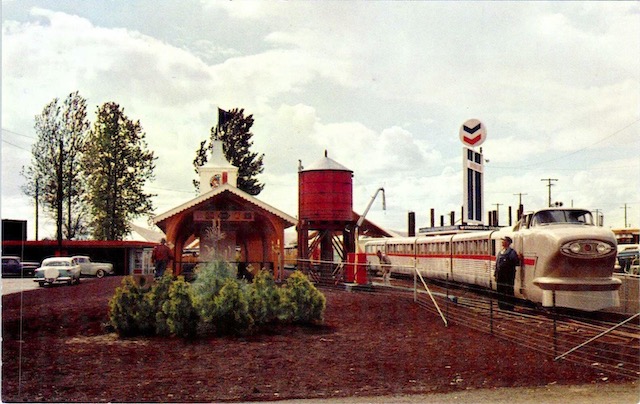 Click image to download a 320-KB PDF of this postcard.
Click image to download a 320-KB PDF of this postcard.
I was already in love with trains by the time of the centennial, so I remember the trains the most, and the train station was right next to the information booth. The fair was served by two trains, which were actually built for the Portland Zoo. The first was a 5/8-scale replica of the General Motors Aerotrain.
One source says the train was built in 1958 by Northwest Marine Iron Works, a company that mainly did ship repairs. Another source says the bodies of the locomotive and coaches were built by H. Hirschberger Company, which worked in aluminum sheet metal. The side the locomotive had the word “Zooliner” in large letters that are strategically blocked from view by the engineer in the above photo.
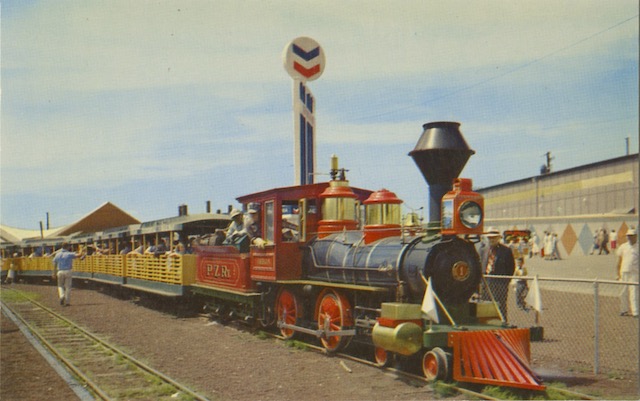 Click image to download a 350-KB PDF of this postcard.
Click image to download a 350-KB PDF of this postcard.
The other train was led by a steam locomotive that was a replica of the Virginia and Truckee Reno, a 4-4-0 American that had been built in 1872. In 1937, that locomotive figuratively went to Hollywood and has since appeared in dozens of movies and television shows. In fact, it is not too much to say that most people’s conception of what a 4-4-0 locomotive should look like is based on this locomotive.
The Zoo train steam locomotive was built by a combination of local live steam enthusiasts and manufacturing companies. Oregon Steel Foundary cast the boiler. Westinghouse donated air compressors and other parts. The locomotive was built at shops of the Northern Pacific Terminal Company (which was renamed Portland Terminal Railroad in 1965). The train cars were built by Hirschenberger. The locomotive was completed on June 19, 1959, and made its very first run at the centennial fair the next day.
The locomotive burns oil, but that’s not a variation from prototype as at various points in its life the Reno burned wood, coal, and oil. After the fair, the steam train (which was marked P.Z.Ry.) and the Zooliner were moved to the zoo, which had opened in a new location on July 1, 1959.
After 1959, Interstate 5 was built along one edge of the fairgrounds. Most of the remaining fairgrounds have been turned into a wildlife area and are closed to the public.
Looking at the pictures of the fair today, it seems pretty rinky dink compared with the 1962 Seattle fair, which attracted six times as many people. But the Seattle fair was an international exposition while the Oregon one was mainly for Oregonians, and it felt like home.
